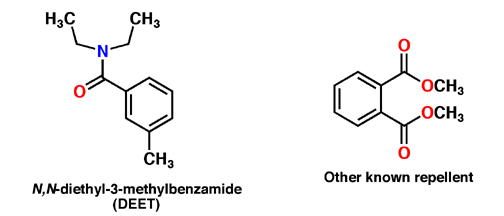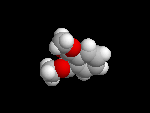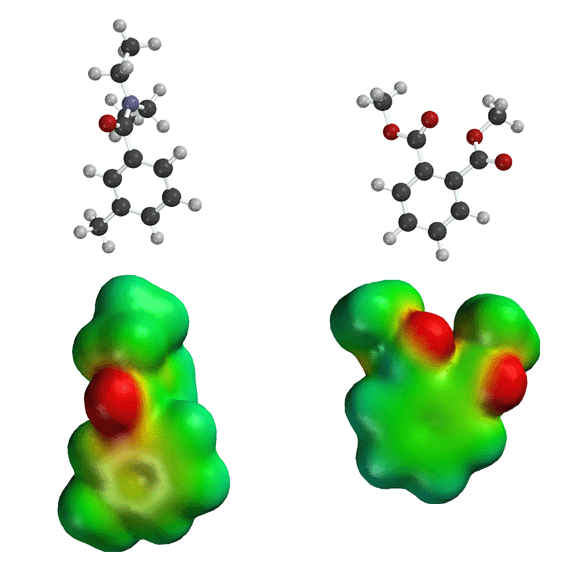|
|
|
DEET
was not designed on a computer or derived from ancient folk medicine. In the
1950's, a massive screening was carried out in which all chemicals scientists
could get their hands on were simply applied to volunteers' forearms, and the
forearms were placed in chambers filled with hungry mosquitoes. DEET emerged
as the best mosquito repellent, and has been used ever since. No one is sure
why it works, it might just "smell bad" to the mosquitoes. Another
known repellent is shown as well. Although the structures are similar, nobody
understands the connection. Related to recent class discussions, they both have
a carboxylic acid derivative, DEET contains an amide, while the other repellent
has two ester groups. |
|
|
|



